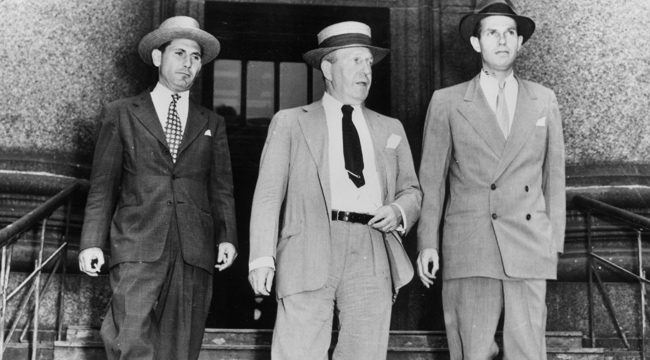It’s May 10, better known to Simpsons fans as Whacking Day! First airing back in 1993, the season four episode focuses on the town of Springfield as they come together to participate in the annual killing of their snake population. The episode satirizes all The Simpsons’ favorite subjects, including religion, politics, mob mentality, and education. Still, it also manages to also tell a real story, exploring Lisa’s morality as she struggles with what she sees as a barbaric tradition. This year, celebrate “Whacking Day” with these fascinating facts.
A real event in Sweetwater, Texas served as the inspiration
Known as the “Rattlesnake Roundup,” this annual event dates back to 1958, when ranchers complaining about a way to help control the reptile’s population after frequent death and injury to their livestock. It proved to be so popular that it became an annual event, which has grown to include snake charmers, parades, pageants, and is topped off with a rattlesnake eating contest. The snakes are rounded up by pouring gasoline into underground burrows, which flushes them out into nearby nets, then later dumped into a snake-pit where they’re euthanized. Prior attempts to ban the use of gasoline was met by an immense backlash from local residents, and while the practice was allowed to continue, the Texas Parks Commission is set to meet again this year to discuss the matter further.
Simpsons writer George Meyer wanted the show to feature an animal-conscious episode and used the “Rattlesnake Roundup” as its basis. Even though the spirit of the episode is against the practice, according to the episode’s commentary track, many of the show’s staff were afraid it would give viewers the wrong impression.
It marks the first appearance of Superintendent Chalmers
The show had been looking for a figure of authority that would loom over Principal Skinner (Harry Shearer), and staff writer Wallace Wolodarsky came up with the idea for School Superintendent Gary Chalmers, voiced by Hank Azaria. Both Shearer and Azaria felt these characters had an instant rapport with one another, and as a result, much of their dialogue was improvised.
Barry White re-recorded “I Can’t Get Enough of Your Love, Babe” for the episode
The late R&B singer was written into the episode as the honorary Grand Marshall of Springfield’s Whacking Day. Once White learns what the event actually entails, he lends his voice (literally) to help Bart and Lisa draw the surviving snakes into their home for safety. When it came to the big musical number, rather than use the existing recording, which is standard practice, White re-recorded a special version just for the episode. White’s opening line in the episode, “My unlimited love to y’all,” is also a nod to his backing band, the Unlimited Love Orchestra, which he formed back in 1973.
No word on the recording process behind Barry White Reads the Yellow Pages, a Moe Szyslak (Hank Azaria) favorite.
There’s a brief nod to the Red Scare

In an episode already stuffed full of scathing satirical references, some early newsreel footage depicts Richard Nixon taking part in a past Whacking Day as the honorary Grand Marshall. The narration by Kent Brockman (Harry Shearer) refers to Alger Hiss, a former U.S. State Department official who was accused of being a Russian spy in 1948 by the House of Un-American Activities Committee (HUAC), and later convicted of perjury in 1950. Nixon, then a California Congressman who sat on the HUAC, was determined to out Hiss as a spy, and used the ordeal to help further his political career.
Just for good measure, the episode later referenced the assassination of Lee Harvey Oswald in a special in-show Itchy and Scratchy cartoon, which itself was a sendup of Oliver Stone’s JFK, which was released two years prior.
It has one of creator Matt Groening’s favorite moments
While Homer (Dan Castellaneta) believes Whacking Day to be “the greatest day of the year,” he tries to cheer Lisa up by explaining its necessity in man’s internal battle with good and evil. The episode then inexplicably flashes to inside his head, with him wearing a devil suit, proclaiming, “I am evil Homer,” as he dances on the grave of “good” Homer. Matt Groening stated on the episode’s commentary track that it was “one of the all-time great moments of Simpsons history.”
The episode won a Genesis Award for how it portrayed the plight of animals
Any concerns that The Simpsons staff had about the episode’s intentions were put to rest by the Humane Society of the United States the following year, as “Whacking Day” was presented with a Genesis Award in 1994, which was presented to programs that “spotlight into the darkest corners of animal abuse and exploitation.” It was the second time The Simpsons had won one, the first being for “Best Television Comedy Series” in 1993, and it would go on to win several more for episodes like “Bart Gets An Elephant” and “Lisa the Vegetarian.”
It inspired a real-life event in Australia
While Eastchester, New York has had days dedicated to destroying rattlesnakes since as far back as 1665, the “Whacking Day” episode inspired Australian politician Shane Knutan to start a similar event in North Queensland, Australia. Dubbed “Toad Day Out,” Queensland-area residents have gathered together since 2009 to round up the area’s cane toads, which are then humanely killed by gassing them with CO2. The toads were first introduced to the region in 1935 to combat the rising populations of frenchi and greyback beetles, who at the time were wreaking havoc on the country’s sugar crop, bringing in the frogs after Hawaii’s success with a similar practice. In the years since, the cane toads have proven to be both invasive highly destructive to the Australian ecosystem, with a female capable of producing more than 20,000 eggs over the course of a lifetime.
Should the destruction of the Australian countryside by a toad brought into the country might sound familiar, once again, The Simpsons did it.






